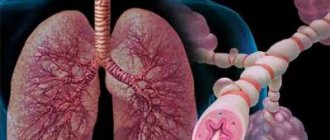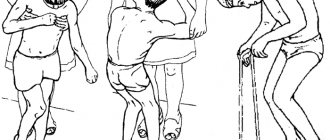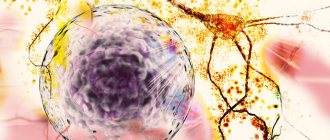Causes of pathology
Todd's palsy is a direct consequence of epilepsy. Such paresis develops as a result of depletion of the central nervous system and an imbalance between the processes of excitation and inhibition. The exact cause that provokes the development of such paresis has not yet been determined, but the most likely hypothesis is the exhaustion of the nervous system. This can also explain the fact that the first symptoms of Todd's paralysis are detected in childhood, when the child's nervous system is highly susceptible to any negative influences due to the fact that it is not fully formed.
Possible causes of Todd's paralysis include:
- epilepsy;
- CNS depletion;
- tumor diseases of the brain;
- encephalitis that develops as a result of infection by the herpes virus;
- vascular ischemia.
All these reasons have one thing in common - a shift in the balance of nervous system processes towards inhibition.
Treatment
Treatment is based on the use of drugs to treat epilepsy. They are selected strictly individually, depending on the severity, length and frequency of attacks. The main drugs should be considered lorazepam, phenytoin, diazepam.
If there are any violations on the part of the internal organs, they are corrected. If during the examination no pathological conditions of the central nervous system were identified, then no further treatment is carried out. For hydrocephalus, diuretics and potassium supplements are prescribed. If an MRI or CT scan reveals a tumor, surgery is performed.
The prognosis is almost always favorable. If treatment rules are followed, this condition rarely recurs.
Symptoms of pathology
After an epileptic seizure, patients experience convulsive conditions. The main symptom of Todd's paralysis is the absence of voluntary motor activity after a seizure for the next two days, but the duration of paralysis can vary. Todd's paralysis is also accompanied by a decrease in muscle activity and reflex activity. Paresis is usually asymmetrical and affects only one side of the body.
Restoration of muscle function occurs without specific therapy, independently. The duration of this condition can vary from several hours to two days, after which muscle activity gradually increases until it returns to normal.
Rare symptoms of Todd's paralysis include blurred vision and speech problems. These conditions are often confused with a stroke.
Medication assistance
Since doctors have not established clear and precise causes that provoke the appearance of post-elliptic paralysis, there are no highly effective methods and techniques of therapy.
Specialists provide symptomatic treatment of the disease, because the first signs of pathological immobilization appear immediately after an epileptic seizure and gradually begin to progress.
For mild paralysis, the use of medications is not required. A severe form of the disease is treated with the use of antiepileptic drugs from the group of anticonvulsants and benzodiazepines.
The main task of the drugs is to block an epileptic attack and reduce their total number. The drugs are selected individually for each patient by the doctor. The most popular drugs include: Midazolam, Porazepan, Diazepan, Fosphenytoin.
The most effective drugs at the moment are Lorazepam and Phenytoin (Difenin). Lorazepam is used orally 2-3 times a day, 1 drop. If the use of this dose does not bring benefit, the daily dose is increased to 6 drops.
Phenytoin is intended for intravenous use. When using the drug, it must be diluted with 0.9% saline solution. The drug is injected into the body slowly (50 mg per minute), with an estimate of 10-15 mg per 1 kg of patient weight.
If a patient has a pathological condition of the brain organs, the functioning of the central nervous system is disrupted, or a cerebral tumor is detected, the patient is referred to a neurosurgeon, who prescribes parallel treatment and correction of such diseases.
No doctor will list to his patient effective recommendations for the prevention of Todd's palsy, since they do not exist. General recommendations from doctors:
- healthy lifestyle;
- preventive examinations in specialized clinics.
Lifestyle with epilepsy:
Symptoms in children
Todd's palsy in children has some differences from the manifestation of the same pathology in adults. This is due to the peculiarity of the fragile children's nervous system.
As a rule, epileptic seizures in childhood are more intense than in adults, which is due to the instability of the processes of inhibition and excitation of the nervous system due to incompletely formed metabolism. Therefore, Todd's paresis in childhood is expressed more clearly than in adults. However, in this case, the neurological symptoms disappear on their own after 24-48 hours.
Diagnosis of pathology
Manifestations of Todd syndrome are symptomatically similar to stroke. They are accompanied by partial or complete paralysis of muscles, problems with speech and focusing of gaze. This causes difficulties in diagnosing the pathology.
Diagnosis is facilitated by a history of epilepsy. The diagnosis is made only after assessing the level of muscle stiffness and weakening. This is done by examining the patient; also, to assess muscle strength, the doctor observes the resistance of the affected limb to external pressure. This requires a physical examination, which evaluates the condition of the muscles on a five-point scale:
- 5 – muscles are normal, no paresis;
- 4 – reflexes are normal, muscles are not weakened enough;
- 3 – motor impairments are visible visually;
- 2 – muscles are weak, it’s impossible to even raise your arm;
- 1 – motor activity is almost completely absent;
- 0 – complete paralysis of muscles.
Magnetic resonance imaging of the brain is mandatory to exclude vascular ischemia. To rule out a stroke, it is necessary to do a CT scan of the brain, which allows one to detect foci of hemorrhage if they are present.
It is necessary to examine the activity of the brain and exclude heart pathologies.
Diagnosis of Todd's palsy
The presence of epilepsy and a history of previously manifested postictal paresis indicate postepileptic paralysis. Differential analysis is necessary to distinguish primary paralysis after an epileptic seizure from acute cerebrovascular accident.
An emergency MRI or CT scan of the brain is necessary. Research data will also exclude brain tumors, encephalitis, and hydrocephalus. If organic brain lesions are not confirmed, it is necessary to monitor the patient over time. The diagnosis of Todd's palsy is confirmed when motor impairment resolves within 48 hours.
Additional diagnostic methods include angiography, MRI of cerebral vessels, and electroencephalography. To assess the condition of the internal organs, an ultrasound of the heart, an electrocardiogram, and a biochemical blood test are performed. To clarify the conclusion, you may need to consult related specialists - a cardiologist, an endocrinologist.
Therapy
Treatment largely depends on the severity of the symptoms of paralysis. For mild symptoms that go away on their own after a short period of time, drug therapy is not used.
For severe symptoms, treatment is with a benzodiazepine. This is a substance from the group of psychoactive drugs that acts on gamma-aminobutyric acid receptors. The medicine has the following effects:
- muscle relaxation;
- anticonvulsant effect;
- sedative effect;
- relieves increased anxiety.
Treatment of Todd's palsy with this drug is due to an unknown cause of the pathology. Drugs containing benzodiazepines have a pronounced therapeutic effect and help to quickly relieve symptoms when used regularly, but this method will not completely get rid of the problem. However, patients respond well to this treatment, noting a decrease in the intensity of paresis.
Drugs for the treatment of pathology have a number of contraindications:
- glaucoma;
- alcohol addiction;
- addiction;
- liver or kidney dysfunction;
- individual intolerance.
When choosing treatment, it should be remembered that psychoactive drugs are potent drugs and often have a withdrawal syndrome.
Todd's palsy is a type of neurological disorder associated with the occurrence of areas of excitation in the brain. It can last from a few minutes to a day. To make this diagnosis, it is necessary to exclude all other similar pathologies, including organic damage to the nervous system.
Definitions
Todd's palsy is a transient condition that develops after an epileptic seizure. Patients experience paresis or paralysis of the limbs, on one side or both. Such paralysis is the first warning of exhaustion of the nervous system and may be a symptom of cancer or metabolic disorders. Paralysis can be diagnosed only after magnetic resonance imaging, which will exclude cerebral circulatory disorders and organic damage to the nervous tissue. Additionally, the doctor may prescribe electroencephalography (EEG) to identify foci of epilepsy, Dopplerography of cerebral vessels, angiography and other tests. If the cause of the attacks is not found, then treatment is reduced to stopping the epilepsy.
Causes
Todd's paralysis remains one of the medical mysteries. And without knowing the cause, doctors cannot develop a mechanism for separating the pathological process in order to cure it. Based on indirect evidence, doctors have several assumptions regarding the nature of the disease. According to the most progressive theory, the “phenomenon of inhibition of the nervous system” manifests itself in the form of paralysis. It is associated with impaired neurotransmitter transmission. In addition, there are several more reasons: - several epileptic seizures in a row; - brain exhaustion; - malignant neoplasm of the central nervous system; - inflammation of the brain substance, especially of viral etiology; — disconnection of lipid metabolism; - presence of ischemic strokes in the past; - diseases of the heart and blood vessels.
Symptoms
Why does Todd's paralysis occur? The symptoms initially resemble those of an epileptic seizure. For others, observing an attack can be quite difficult, since they have no opportunity to help the patient. But even after the cramps end, the person cannot fall asleep and experience blissful oblivion. On the contrary, he freezes and cannot move his arms and legs. How long will Todd's paralysis last? Symptoms (photos of patients can be traumatic and are considered unethical) sometimes persist around the meshes or more. Doctors most often note the appearance of unilateral paralysis or paresis. Over time, the motor blockade passes without leaving any consequences. Medical periodicals record cases of Todd's palsy with visual and articulation impairments. At the first encounter with this pathology, the symptoms can be regarded as manifestations of a stroke, but after all the necessary diagnostic measures have been carried out, the primary diagnosis is removed, and the rapid regression of symptoms confirms the version of paralysis.
Diagnostics
What should be done to confirm Todd's paralysis? The signs of the disease are quite vague. It is necessary to exclude all other pathologies to be sure of the diagnosis. The first step is to determine the severity of the observed condition and the level of muscle paralysis. To do this, conduct a physical examination and compare the data obtained on a five-point scale:
- Five points means a complete absence of symptoms, the patient’s muscles are in a state of physiological norm.
- Four points – strength indicators are slightly reduced, but the activity of the limbs is still maintained. The patient calmly overcomes the resistance of the doctor's hand.
- Three points - stiffness of the victim’s muscles is noticeable to the naked eye, but the patient is still able to make voluntary movements, although not as quickly as with four points. It becomes more difficult to overcome the resistance of the doctor's hand.
- Two points - the gravity of the Earth becomes an insurmountable obstacle for such a patient.
- One point – complete muscle paralysis is observed.
After the examination, the doctor collects a thorough history from the patient’s relatives, studies the medical record, and prescribes a computed tomography or magnetic resonance imaging scan. To exclude a stroke, the patient undergoes angiography to identify the focus of epilepsy (if there is a history of one), and electroencephalography is prescribed. To determine concomitant pathologies, ultrasound examination of the heart and electrocardiography are performed. Only having all the results, the doctor can choose the most probable one among all the possible diagnoses and begin therapy.
Treatment
How can Todd's paralysis be reversed? The treatment, although purely symptomatic, has low effectiveness, since it is difficult to accurately establish the cause of this condition. Therapy depends on the level and severity of paralysis. If movement disorders are minor, then specific treatment is not required. The symptoms will go away on their own within a few hours or days. For more profound disorders, benzodiazepine drugs are used, such as Midazolam, Diazepam, Lorazepam, Fosphenytoin or Phenytoin. Each of them stops convulsive seizures and their consequences. When prescribing them, it is necessary to remember that abrupt withdrawal of antiepileptic drugs can also provoke an attack. There are contraindications for prescribing these drugs. First of all, this is, of course, intolerance to the components of the drug, as well as a history of closed-angle glaucoma and drug or alcohol addiction. In addition, renal function plays an important role, since the drug is mainly excreted in the urine.
Prevention
There is no way to prevent Todd's post-seizure paralysis. This condition has not yet been fully studied, so specific prevention, as well as treatment, cannot be developed. Perhaps after some time, when the capabilities of medicine become even greater, we will be able to take some steps to eliminate this pathology. Today, doctors give rather vague advice, such as maintaining a healthy lifestyle, proper nutrition, giving up bad habits and moderate physical activity. In addition, do not forget about periodic preventive examinations, because any disease is easier to prevent than to treat.
Forecast
Todd's palsy can have a good or bad prognosis. It all depends on the severity of neurological symptoms and the duration of paresis or paralysis. If a neurologist gives a rating of “three” or “four” on a five-point scale, then in this case the disease does not cause significant concern, and the prognosis for life and health is favorable. The body quickly recovers after attacks; the condition does not require drug intervention. If the paralysis lasts a long time, the functions of the limbs are restored for a long time, and the number of attacks becomes more frequent over time, then the prognosis for life is, of course, unfavorable.
Latest research
Right - and left-sided Todd's palsy can progress, and over time, muscle weakness remains even after long-term treatment. For such patients, as well as other paralyzed people, science has a couple of revolutionary ideas to offer. The first of these is the creation of prosthetics. Today, there are prototypes of bionic limbs controlled by the power of thought, that is, the device connects to the nervous system and perceives nerve impulses, deciphering the signals. The second method is rather biological. It is based on the restoration of nerve endings using stem cells. Since they have a tendency to divide almost endlessly, and can also differentiate into any cell of the human body. Experiments are currently being carried out on laboratory animals, but if they are successful, one can hope for a significant breakthrough in the treatment of neurological diseases.
Treatment of infantile paralysis
If the pathology manifests itself in children, treatment with psychoactive drugs is not carried out due to the weakness of the children's nervous system. In this case, the disease is caused by a disorder of lipid metabolism, so treatment is carried out with the help of drugs that improve metabolic processes in the body.
If a child’s disease is due to a genetic predisposition, and one of the parents is also susceptible to Todd’s paresis, drug therapy is often not prescribed.
Prevention and prognosis
The reason for the development of such temporary immobilization has not yet been clarified, which makes any preventive measures impossible. Todd's palsy accompanies epilepsy, and, like the underlying disease, has no cure. Symptomatic treatment is indicated only if the signs of Todd's palsy are obvious.
There are known cases of pathology unrelated to epilepsy. The disease develops against the background of depletion of the nervous system. In this case, the only preventive measure is a healthy lifestyle and careful attention to your own health. Any neurological disorders should be treated promptly, otherwise there is a high probability of developing multiple complications, including Todd's disease.
It’s difficult to say with certainty about the prognosis. On the one hand, the symptoms of the pathology go away on their own, but, on the other hand, the situation can worsen significantly if a new seizure of epilepsy occurs before muscle activity is restored.
Todd's disease is best treated in childhood. In this case, the symptoms often go away on their own as the patient grows older, especially if measures were taken in a timely manner to stimulate metabolic processes in brain cells. With age, the nervous system becomes stronger, metabolism is normalized, the processes of inhibition and excitation become balanced, which means the symptoms of the disease disappear without a trace.
Clinical manifestations of Todd's palsy
Blocking of voluntary movements that follows an epileptic attack is the main clinical symptom. In most cases, hemiparesis is observed - a weakening of the muscle tone of the arms and legs, on the one hand. Monoparesis is observed less frequently - weakness in only one limb.
The centralization of paresis is manifested by increased muscle tone and decreased sensitivity of the affected limb. Muscle weakness is expressed in varying degrees - from mild sensitivity disorder to complete paralysis.
Motor functions are restored within 24 hours, but sometimes this period lasts up to 2 days. Muscle sensitivity is restored gradually, along with it the ability to perform voluntary movements returns. In severe cases, when the attacks are repeated, Todd's palsy does not completely regress. The patient still has signs of motor deficit.
Secondary generalized seizures of epilepsy, Jacksonian epilepsy, status epilepticus lasting more than 30 minutes - all these conditions entail the development of transient paralysis. If the patient notes speech and visual disorders (motor aphasia, hemianopsia) during paralysis, differential diagnostic measures should be taken to exclude stroke. This is especially important during the initial appearance of postepileptic paralysis.










